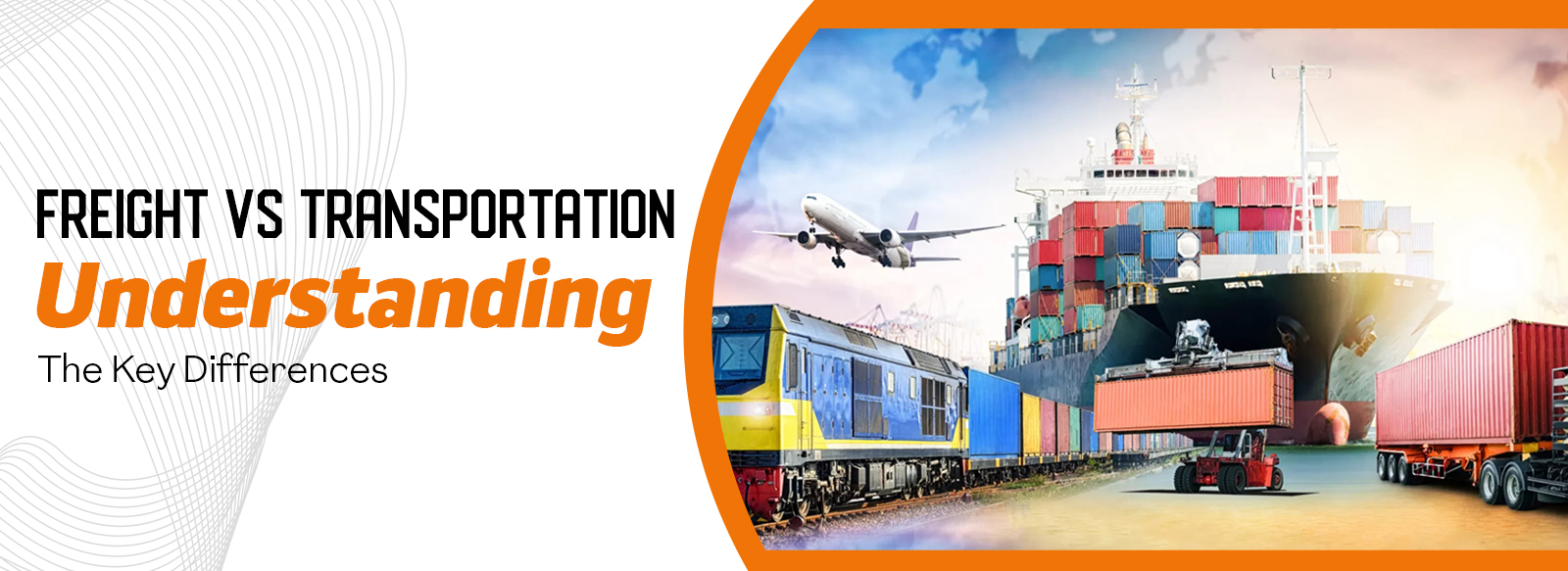Freight vs. Transportation: Understanding the Key Differences
In the logistics industry, terms like "freight" and "transportation" are often used interchangeably. However, they represent distinct aspects of the supply chain. While freight refers to the goods being transported, transportation pertains to the process or mode of moving those goods. For businesses like Jyoti Freight, understanding these differences is essential for efficient logistics planning. Here are 10 critical distinctions between freight and transportation.
1. Definition and Scope
- Freight: Refers to the cargo or goods being moved from one place to another. It can include raw materials, finished products, or large shipments.
- Transportation: Involves the methods, infrastructure, and vehicles used to move freight, such as trucks, trains, ships, or airplanes.
2. Purpose
- Freight: The focus is on the goods being delivered and their condition upon arrival.
- Transportation: The focus is on the logistics and efficiency of the journey, ensuring timely delivery and route optimization.
3. Modes of Operation
- Freight: Categorized based on type, such as bulk freight, perishable freight, or hazardous materials.
- Transportation: Encompasses various modes like road, rail, air, sea, or intermodal logistics.
4. Cost Factors
- Freight: Costs are determined by weight, volume, type of goods, and packaging requirements.
- Transportation: Costs are influenced by fuel prices, vehicle maintenance, tolls, and driver wages.
5. Documentation Requirements
- Freight:Requires specific documents like a bill of lading, freight invoice, or packing list.
- Transportation: Focuses on permits, licenses, route plans, and vehicle-related documentation.
6. Infrastructure and Assets
- Freight: Includes warehouses, storage facilities, and packaging materials to secure goods.
- Transportation: Relies on vehicles, fuel stations, highways, rail tracks, and ports.
7. Role in the Supply Chain
- Freight: Represents the product being transferred within the supply chain.
- Transportation: Acts as the enabler, connecting different supply chain nodes.
8. Technology Usage
- Freight:Utilizes tracking systems and inventory management software to monitor goods.
- Transportation: Employs GPS, route optimization tools, and fleet management systems for operational efficiency.
9. Risk and Insurance
- Freight:Insurance covers risks like damage, theft, or loss of goods during transit.
- Transportation: Insurance focuses on vehicles, drivers, and liability coverage.
10. Industries Involved
- Freight:Deals with manufacturing, retail, agriculture, and export/import industries.
- Transportation: Includes logistics companies, freight forwarders, and shipping agencies.
Conclusion:
For businesses like Jyoti Freight, distinguishing between freight and transportation is critical to optimizing logistics operations. Freight refers to the goods that need to be moved, while transportation is the method or process of moving them. Understanding these differences can lead to better planning, reduced costs, and improved customer satisfaction. Whether you're shipping small parcels or large cargo, Jyoti Freight ensures seamless freight management and reliable transportation solutions tailored to your needs.



